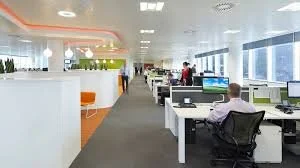Hurricanes and Snowstorms Oh My: The Business Case for Telecommuting
It has become common knowledge that Flexible Work Arrangements (FWAs) help individuals manage their work-life needs, but to my surprise there are some employers who continue to question the business benefits of FWAs. The Agile Workforce and Workplace: Flex Primer for the New Future of Work (2011) by Karol Rose and Lori Sokol, PhD enumerates the many ways FWAs help employees: control over workload, ability to handle work-life demands, promotes health and well being, reduces stress, etc. In addition, the book also points out the clear-cut and compelling ways FWAs help employers, including Business Continuity Planning and Facilities Planning.
Business Continuity Planning
When weather events like Hurricane Joaquin occur, employers who have embraced FWAs and telework arrangements have an advantage. These companies can feel assured that employees will continue to produce even if the office is closed. Technology makes working from home a reality for many employees. However, this was not always the case. During the terrorist attacks on 9/11, I was working downtown at Goldman Sachs. Our office was closed for several days following the attacks. Since I managed Goldman’s Employee Assistance Program and arranged for the emotional care of our employees, I worked incredibly hard during those few days. Given the limited technology we had at that time, the work was slow and frustrating. Not only were we emotional and traumatized ourselves, we had to work harder than ever without the technological support to do so.
Thankfully, today, we have the technology to support workers if there is an emergency. Events like the Swine Flu, hurricanes, snowstorms and even a visit from the Pope are among the multiple events that prompt the need for employees to work offsite. Companies that have embraced telecommuting as part of their corporate culture are better able to handle unexpected events. If employees already have technology that allow them to work from home and managers already have the skills to handle remote employees, then they can make a seamless transition when an emergency arises.
By having employees telework on a more regular basis—not just when there are big events, employees can create a work space at home that is conducive to working from home. They can also work out any kinks with their technology. Finally, when employees work from home, managers and employees develop skills to work together remotely. Competitively speaking, the better able employees can continue to work when there is a crisis, the better a company’s competitive edge.
Facilities Planning
Another fascinating trend that was highlighted in The Agile Workforce and Workplace is facilities planning and design. There is so much creativity with designing the modern workspace. Developing a flexible workforce contributes to this trend. Today, facility design can be more creative with space dedicated to collaborative meeting spaces in addition to individual workspaces. Embracing telework supports this opportunity.
Companies spend a ton of money on real estate. According to The Agile Workforce and Workplace, it costs approximately $8,000-$14,000 a year for a workspace per employee. If companies can reduce office space by supporting employees who wish to work from home or leveraging an employee’s hectic travel schedule, there are many benefits. Companies save money on space, reduce energy costs, and can design a more fluid and adaptable workspace. “Hoteling” is a brilliant way to address the real estate realities of a modern workforce. Since many employees are not in their office all the time due to travel schedules or telework arrangements, hoteling is a way to create shared workspaces and save money.
Hoteling involves creating workspace that can be utilized by multiple employees. By having employees work from home and then reserve office space at work when they need to come into the office, companies reduce the 1:1 ratio of employee to workspace. Not to mention the fact that employees save on gas by not having to drive to and from work each day and employers save on energy costs by reducing the amount of space they need for workspaces. Employers who reduce energy output can also receive carbon-offset credits.
Encouraging employees who prefer to work from home the opportunity to focus on their work there and then come into work for collaborative opportunities, is an enterprising way to give employees control over how work gets done. Supporting employees’ unique needs without sacrificing productivity is the crux of the flexible work culture.
Employers can prepare for the inevitable emergencies by embracing telework and can save money on real estate costs. Having a more fluid approach to how and where work gets done is a win/win for employers and employees. For more information about The Agile Workforce and Workplace: Flex Primer for the New Future of Work, visit Karol Rose’s website at http://www.klrandassociates.com.




